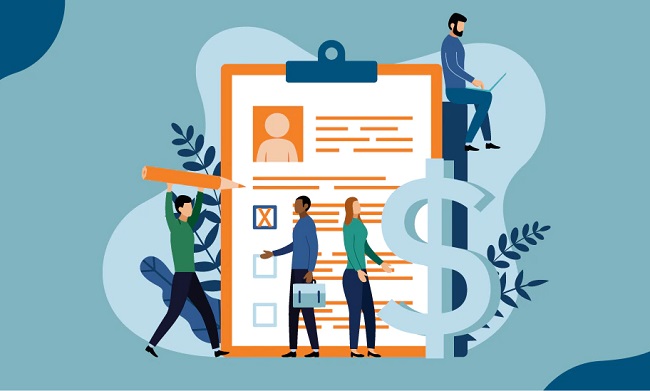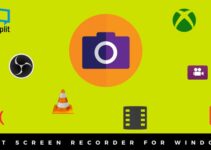The finest personal finance software streamlines the process of keeping track of everything from income and expenses to savings and investments. By eliminating the need for paper receipts and complicated spreadsheets, it streamlines the process of managing one’s personal finances.
The greatest personal financial software also allows you to centralise and back up all of your data in a secure location, frequently the cloud (opens in new tab).
While the most basic of financial planning programmes merely provide a central hub from which to manage your money, more complex programmes can assist with things like paying down debt and creating realistic budgets, and some even offer financial advise on top of their other features.

Tips for Picking the Right Personal Finance Software
Selecting a personal financial software programme can be a huge assistance if you’re in dire need of organisation, especially if you’re managing a small business. The best personal finance software will include features like expense tracking, budgeting, and record-keeping for items like receipts built right in.
An additional perk is that most budgeting programmes are compatible with other popular tax and accounting programmes. That puts you in a far stronger position at tax time. There are online and offline versions of personal finance packages, and many of them include mobile apps that make it easy to keep tabs on day-to-day expenditures.
In addition, you can be assured that your data is secure because cloud-based personal finance software allows you to save it all in one location.
Read Also:
What You need to Know About 2024’s Top Personal Finance Software in full:
1: Quicken
The top all-around financial plan
- Superior for: Any and Any Situation
- Supported Operating Systems: Microsoft Windows, Apple iOS, Google Android, and BlackBerry OS
- Excel/Accounts integration: Yes, with tiered pricing
After years of success on desktop computers, the personal finance management programme Quicken is now also available as a mobile app. Quicken’s array of accounting features is among the best available. Budgeting, paying bills, managing accounts, and making investments are just few of the topics covered.
When used for budgeting, it allows you to record your expenditures and earnings separately and then view them side by side for a more complete picture of your spending habits and financial standing.
Also, you can view your recurring monthly payments, such as those for utilities, and your available funds for making such payments. You may consolidate your bank and credit card statements for bookkeeping purposes, giving you a clear picture of your total monthly outgoings.
This comes in helpful because it is easy to forget how much money is actually spent on little things over the course of a month.
Savings, investment portfolios, and 401(k) pension plans can all be monitored with this feature. As a result, you can see exactly how much you have saved and invested, while it’s true that you shouldn’t worry too much about short-term changes in the stock market.
2: YNAB
Superior for both private and commercial budgeting
- Recommended Use: Routine Financial Planning
- Systems: Microsoft Windows, Apple iOS, Google Android
- Fee Structure: Monthly/Annual
- Incorporation of Excel and Financial Statements:
You Need A Budget, abbreviated YNAB, is arrived in case you require detailed instructions. Because, you know, you really do need one if you don’t want to spend all your money and then some. Perhaps your financial situation is better than you realised.
YNAB’s main goal is, predictably, to help you cut back on unnecessary expenditures and stop squeezing by on the money you have each month. If you stick with the programme and learn to control your spending, YNAB will soon show that you are spending money from the previous month rather than the one you just received.
It’s easy to set up, works with the vast majority of bank transaction data, and can be easily adapted for either individual or company use by reorganising your money into relevant categories.
3: Banktree
To keep tabs on multiple currencies
- Ideal For: Dealing With a Many of Different Currencies
- Systems: Microsoft Windows, Apple iOS, Google Android
- Prices are a Flat Rate
- Counting and Exceling: Sure
BankTree is pleased to work with currencies from all over the world, and it performs a great job if you need to deal with numerous currencies at once by displaying your balances in each one. As an added bonus, its mobile app can be used to scan receipts for subsequent import, making it a useful tool for general record-keeping.
BankTree isn’t the most aesthetically pleasing programme, and it’s a little more cumbersome to use than some of its more polished relatives. Nevertheless, it does provide some pretty beautiful reports that you can segment by time period or payee. Before committing to this one, you might want to give the free trial a try.
The desktop programme includes a year’s worth of updates and support at no extra cost, but you can only install it on a single computer; running it on more than one computer will incur additional fees. A web browser-based version is also accessible.
4: Money Dashboard
Ideal for customised labels that simplify cost tracking
- Top Choice: Useful Resources
- Smartphones using Apple’s iOS or Google’s Android
- Excel/Accounts Integration, No Cost Yes
Although not attempting to revolutionise banking or providing anything particularly groundbreaking, the Money Dashboard iOS/Android app is perhaps one of the most useful financial management applications available.
Connect all of your financial accounts in the UK so you can view your total balances in one convenient location after entering your login information only once. Just for that reason alone, it earns our highest recommendation.
In addition, Money Dashboard will monitor your expenditures and provide you with a pie chart summarising your spending on things like loans, groceries, transportation, and more.
You can see at a glance the total amount of money you have in all of your accounts, and you can also see how that amount compares to the same time last month. That is an excellent incentive.
Details About the Personal Finance Software:
Understanding Personal Finance Software
Personal finance software is a type of application designed to help individuals manage their personal finances. This software assists in tracking income, expenses, assets, liabilities, and often includes features for budgeting, investing, and planning for financial goals.
The Evolution of Personal Finance Software
Initially, personal finance management was predominantly manual, involving paper-based ledgers and basic spreadsheets. With advancements in technology, personal finance software has evolved to offer sophisticated features like automated transactions tracking, financial forecasting, and integration with banking and investment accounts.
Key Features of Personal Finance Software
1. Expense Tracking and Categorization
Allows users to record and categorize expenses to understand spending patterns better.
2. Budget Creation and Management
Facilitates setting up customizable budgets and monitoring progress towards staying within those limits.
3. Account Aggregation
Enables linking and viewing all financial accounts in one place for a comprehensive financial overview.
4. Investment Tracking and Analysis
Some software includes tools for tracking investments, analyzing portfolio performance, and even providing investment advice.
5. Bill Payment and Reminders
Offers functionalities to schedule bill payments and set reminders for due dates to avoid late payments.
6. Financial Reporting
Provides detailed reports and charts on various aspects of personal finance, such as net worth, expenses, income, and more.
Benefits of Using Personal Finance Software
1. Improved Financial Awareness
Keeps a detailed record of financial transactions, promoting a deeper understanding of personal finances.
2. Effective Budget Management
Helps in creating and sticking to budgets, essential for achieving financial goals.
3. Time-Saving and Convenience
Automates many aspects of financial management, saving time and reducing the effort required in manual tracking.
4. Informed Financial Decision-Making
Provides insights and data that aid in making informed decisions about spending, saving, and investing.
5. Goal Setting and Tracking
Enables setting financial goals, such as saving for retirement or paying off debt, and tracks progress towards these goals.
Types of Personal Finance Software
1. Desktop-Based Software
Installed on personal computers, offering robust features with data stored locally.
2. Web-Based Software
Cloud-based solutions accessible via web browsers, offering the convenience of remote access and often automatic updates.
3. Mobile Applications
Apps that provide on-the-go access to personal finance tools, making it easier to manage finances anytime, anywhere.
Choosing the Right Personal Finance Software
1. Assess Your Financial Needs
Consider your specific financial management needs, such as budgeting, investment tracking, or debt management.
2. Look for User-Friendly Interface
Choose software that is easy to navigate and understand, especially if you are new to personal finance management.
3. Security Features
Given the sensitive nature of financial data, opt for software with robust security measures to protect your information.
4. Integration Capabilities
Consider software that can integrate seamlessly with your bank accounts, investment portfolios, and other financial services.
5. Cost vs. Features
Evaluate the cost of the software against the features offered to ensure it provides value for your investment.
6. Customer Support and Resources
Ensure the software provider offers adequate customer support and resources for troubleshooting and guidance.
Implementing Personal Finance Software
1. Setting Up and Customization
Set up the software by linking accounts and customizing settings and categories according to your financial situation.
2. Regular Monitoring and Updates
Regularly update and monitor your financial data to ensure accuracy and to stay on top of your finances.
3. Continuous Learning
Stay informed about new features or updates to the software and continually educate yourself on personal finance management.
Read Also:
Conclusion
Personal finance software is a powerful ally in mastering the art of financial management. By leveraging the right tools, individuals can gain a comprehensive understanding of their financial health, make informed decisions, and work towards achieving their financial goals.
As technology continues to evolve, personal finance software becomes more intuitive and integrated, offering even greater capabilities to manage your finances effectively and efficiently.


